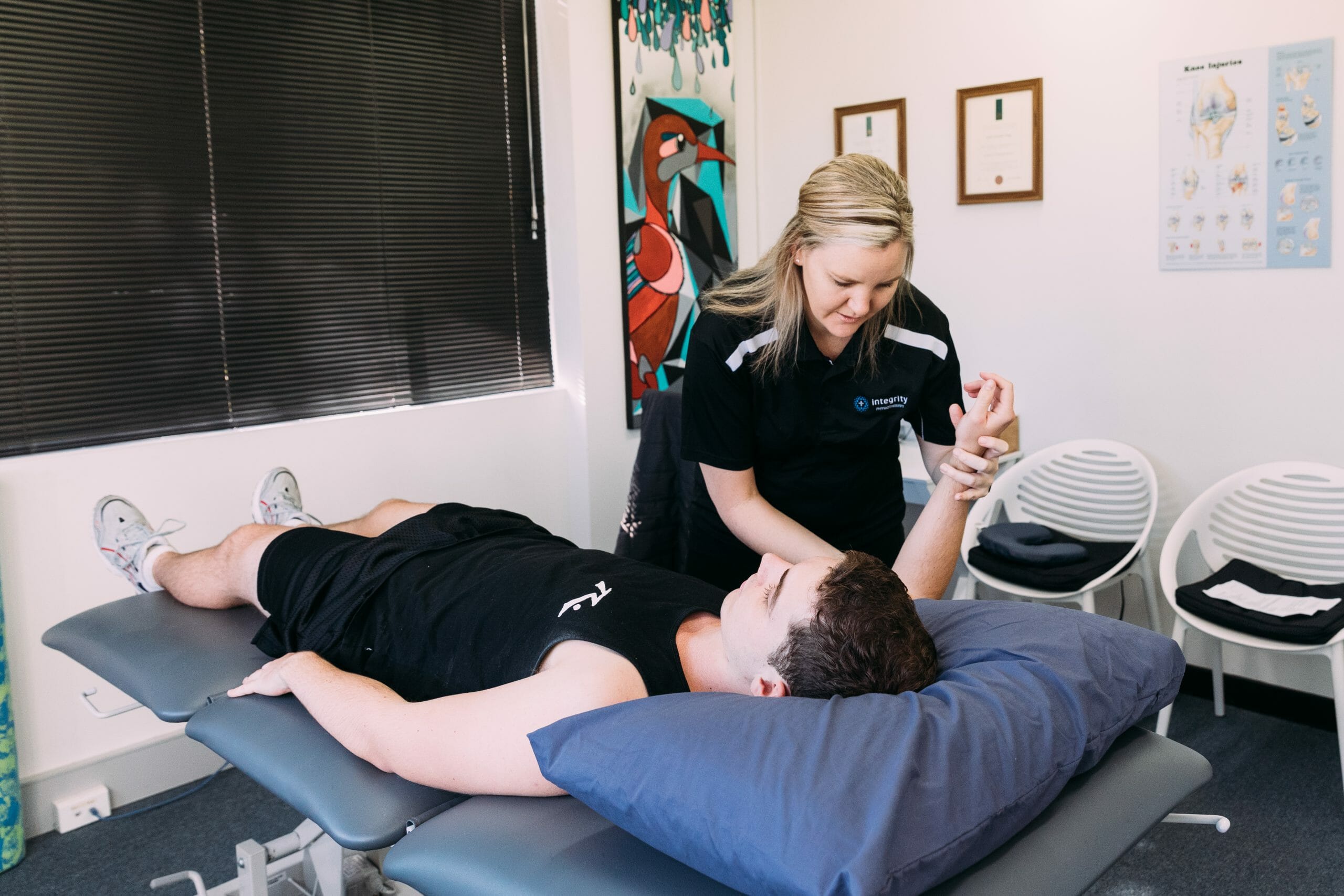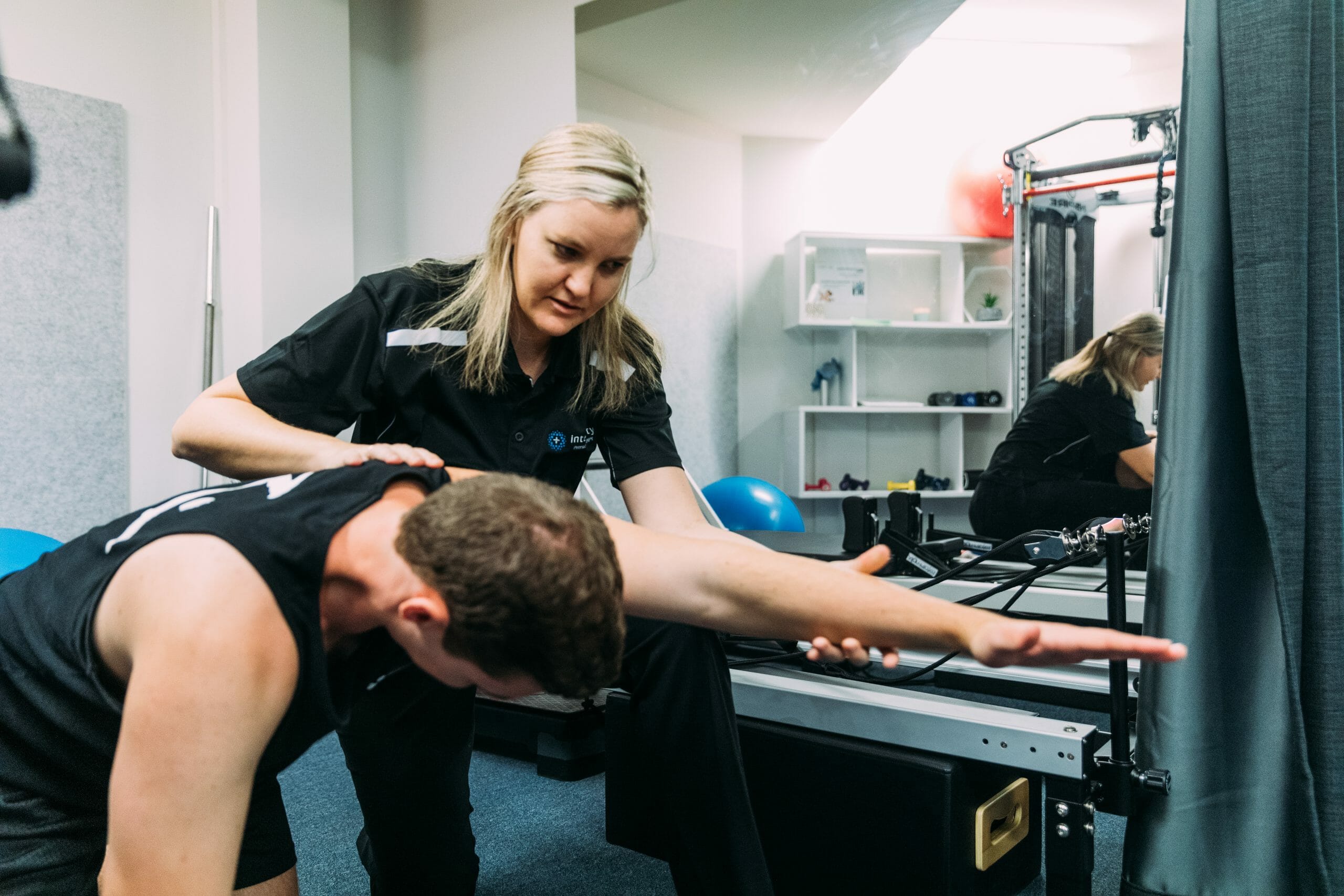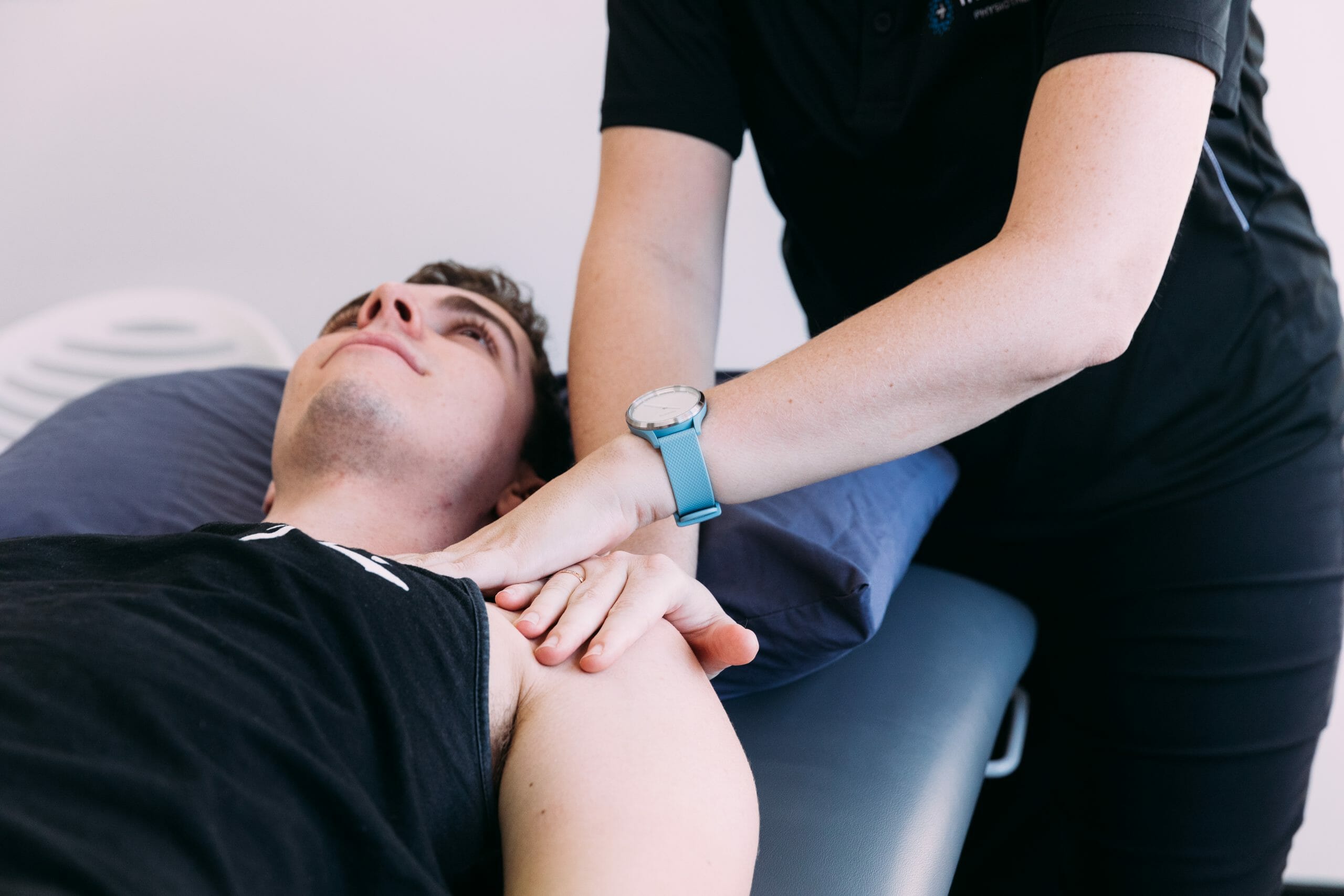
Reclaim Your Shoulder Movement
Dealing with persistent shoulder pain that’s making everyday tasks a struggle?
Your shoulder’s incredible range of motion makes it highly functional but also more vulnerable to injury. The muscles, tendons, and ligaments that support your shoulder play a crucial role in maintaining stability and preventing further damage.
At Integrity Physio, we understand how essential it is to restore your shoulder’s full function. Our tailored approach towards physiotherapy for shoulder pain helps you build strength, ease pain, and improve movement, so you can move confidently and live pain-free again.

With a focus on personalised care, we provide treatments designed to relieve pain, restore strength, and improve mobility, so you can return to your daily activities with confidence.
Our approach goes beyond temporary relief—we aim to address the root cause of your shoulder pain. Treatment may include manual therapy to release tension, customised exercises to rebuild strength, dry needling to relieve muscle tightness, and techniques to correct movement patterns that contribute to injury. For more complex cases, we may also consider radiology or options like corticosteroid injections to manage inflammation and pain effectively.
With each session, we’ll work with you to improve your shoulder’s function, reduce discomfort, and prevent future injuries, guiding you towards long-term recovery and well-being.
Everything you need to know about shoulder pain—how it works, what causes it, and how to manage and prevent it.
- Sharp or aching pain that may worsen with movement
- Weakness or instability in the shoulder joint
- Limited range of motion or difficulty lifting your arm
- Swelling or tenderness around the shoulder
- Clicking or popping sounds with movement
- Pain radiating down the arm or into the neck
- Rotator Cuff Syndrome: Injuries like rotator cuff impingement, tears, and tendonitis can cause pain and limit movement, ranging from mild inflammation to severe injuries that may require surgery.
- Shoulder Arthritis: Osteoarthritis is common, especially in older adults, resulting from wear and tear on the shoulder joint over time. This may or may not lead to pain, stiffness, and reduced mobility.
- Shoulder Bursitis: Bursitis occurs when the bursa, a fluid-filled sac that cushions the shoulder, becomes inflamed. This often happens due to shoulder impingement, sometimes causing pain with movement.
- Dislocated Shoulder: Trauma, like a fall or sports injury, can cause the shoulder’s ball joint to be forced out of its socket, leading to severe pain and inability to move the arm.
- Preventing shoulder pain is possible with some simple lifestyle changes and exercises that strengthen the shoulder muscles and protect the joint from injury:
- Strengthen the rotator cuff: Engage in regular exercises that target the muscles responsible for stabilising your shoulder.
- Improve your posture: Avoid slouching or prolonged poor posture that can strain your shoulders and upper back.
- Take frequent breaks: If your work involves repetitive movements, take regular breaks to avoid overuse injuries.
- Use proper technique in sports: Ensure your technique is correct during activities that place strain on the shoulder, such as lifting, swimming, or throwing sports.
- Warm up before exercise: Properly warm up before engaging in physical activities to prepare your muscles and reduce the risk of injury.





